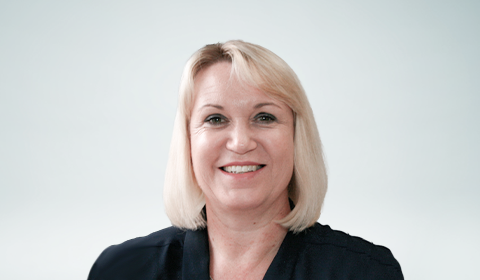There are six key areas we can address:
1. Quality metrics:
 Robust processes, such as quality assurance programs, escalation procedures and sign-off processes, are a good place to start. All of these are quality metrics that provide opportunities for feedback. Regular feedback and ongoing mentoring will become increasingly important as assessors working remotely won’t have the benefit of learning from others around them. Specialist assessor roles in a team designed purely to mentor, develop, and grow the assessors will stand insurers in good stead in terms of upskilling their teams. Dedicated trainers to drive the insurer’s claims philosophy will ensure consistency of decisions. Quality assurance checks with real-time feedback to staff will also assist with better quality decisions and improved customer experience.
Robust processes, such as quality assurance programs, escalation procedures and sign-off processes, are a good place to start. All of these are quality metrics that provide opportunities for feedback. Regular feedback and ongoing mentoring will become increasingly important as assessors working remotely won’t have the benefit of learning from others around them. Specialist assessor roles in a team designed purely to mentor, develop, and grow the assessors will stand insurers in good stead in terms of upskilling their teams. Dedicated trainers to drive the insurer’s claims philosophy will ensure consistency of decisions. Quality assurance checks with real-time feedback to staff will also assist with better quality decisions and improved customer experience.
2. Who you hire:
 Specific benefits require a specific skillset, and this is becoming more and more evident. If assessors are working on a variety of benefit types, with limited opportunity to learn from others or ask for assistance due to remote working, it may make the customer experience less favorable. Having assessors focusing on benefits that are aligned with their skillset and background will ensure the best customer service. For example, when managing a large disability portfolio, it is helpful to have assessors with a technical background (occupational therapists, physiotherapists) who themselves have treated people with these medical conditions and have some insight into their recovery. Creating in-house experts within your teams, who are responsible for assimilating and sharing information internally, helps with keeping up to date with information and trends, and also provides a growth pathway for individuals.
Specific benefits require a specific skillset, and this is becoming more and more evident. If assessors are working on a variety of benefit types, with limited opportunity to learn from others or ask for assistance due to remote working, it may make the customer experience less favorable. Having assessors focusing on benefits that are aligned with their skillset and background will ensure the best customer service. For example, when managing a large disability portfolio, it is helpful to have assessors with a technical background (occupational therapists, physiotherapists) who themselves have treated people with these medical conditions and have some insight into their recovery. Creating in-house experts within your teams, who are responsible for assimilating and sharing information internally, helps with keeping up to date with information and trends, and also provides a growth pathway for individuals.
3. Ongoing development and quality assurance:
 The claims environment has increased in complexity over the years as insurers are challenged by consumers to get it right; this is further highlighted by the pandemic. Ongoing development and learning are critical in order to keep up with medical advancements, regulation, and consumer expectations. While all insurers have technology available to connect with the team, this learning requires a clear approach and defined outcomes. These outcomes should be written into performance goals in order to ensure their successful application. Insurers need to focus heavily on continued learning, development, and quality assurance, even for suitably qualified staff.
The claims environment has increased in complexity over the years as insurers are challenged by consumers to get it right; this is further highlighted by the pandemic. Ongoing development and learning are critical in order to keep up with medical advancements, regulation, and consumer expectations. While all insurers have technology available to connect with the team, this learning requires a clear approach and defined outcomes. These outcomes should be written into performance goals in order to ensure their successful application. Insurers need to focus heavily on continued learning, development, and quality assurance, even for suitably qualified staff.
4. Communication strategy:
 Are claims staff accessible to their customers and are they meeting their preferred method of communication? For example, can they speak to an assessor about their claim, or is communicating via e-mail their only option? We have seen through the pandemic that many customers want to speak to someone who can answer their questions and alleviate their concerns. Can assessors use platforms such as Teams or Zoom to call claimants and have a “face-to-face” discussion with them to make the claims process more personal? Insurers need to develop robust communication practices through which they can demonstrate their support of their customers at a time when they need it most.
Are claims staff accessible to their customers and are they meeting their preferred method of communication? For example, can they speak to an assessor about their claim, or is communicating via e-mail their only option? We have seen through the pandemic that many customers want to speak to someone who can answer their questions and alleviate their concerns. Can assessors use platforms such as Teams or Zoom to call claimants and have a “face-to-face” discussion with them to make the claims process more personal? Insurers need to develop robust communication practices through which they can demonstrate their support of their customers at a time when they need it most.
5. Claim submission process:
 How easy is it for customers to submit a claim and track progress? Is it still required that a fully completed claim form and all supporting evidence must be submitted via e-mail, or is there opportunity to adopt technology that allows for submission via a portal or mobile phone? This particular aspect came to light during hard lockdown in South Africa, where claimants and beneficiaries were unable to print claim forms, sign them, and scan them in order to notify an insurer of a claim. Processes need to adapt to enable sustained remote working, and they also need to be supported by technology.
How easy is it for customers to submit a claim and track progress? Is it still required that a fully completed claim form and all supporting evidence must be submitted via e-mail, or is there opportunity to adopt technology that allows for submission via a portal or mobile phone? This particular aspect came to light during hard lockdown in South Africa, where claimants and beneficiaries were unable to print claim forms, sign them, and scan them in order to notify an insurer of a claim. Processes need to adapt to enable sustained remote working, and they also need to be supported by technology.
6. Future of healthcare:
 Possibly one of the biggest factors claims teams need to consider is changing healthcare practices. Many markets adopted telehealth as a treatment strategy during the pandemic out of necessity. This can yield good results and is often a better option than no consultation or follow-up at all. It is recommended that insurers use their medical resources to keep researching medical updates and trends in order to understand the potential impact of these on insurance policies and product design. Aspects such as wellness (mental and physical) and keeping policyholders healthy should have a renewed focus and insurers will likely have to do more in this area in the future.
Possibly one of the biggest factors claims teams need to consider is changing healthcare practices. Many markets adopted telehealth as a treatment strategy during the pandemic out of necessity. This can yield good results and is often a better option than no consultation or follow-up at all. It is recommended that insurers use their medical resources to keep researching medical updates and trends in order to understand the potential impact of these on insurance policies and product design. Aspects such as wellness (mental and physical) and keeping policyholders healthy should have a renewed focus and insurers will likely have to do more in this area in the future.
While the pandemic forced insurers to change lanes and think on their feet, it has also highlighted potential opportunities for the future. Those companies that learn – and act on – the lessons of this crisis will be well placed to succeed.



